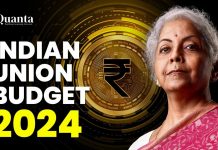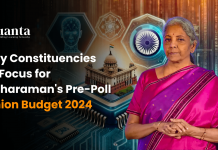What is RCEP?
Described as the “largest” regional trading agreement to this day, RCEP was originally being negotiated between 16 countries — ASEAN members( Brunei, Cambodia, Indonesia, Laos, Malaysia, Myanmar, the Philippines, Singapore, Thailand, and Vietnam.) and countries with which they have free trade agreements (FTAs), namely Australia, China, Korea, Japan, New Zealand and India.
Note: A free trade agreement is a pact between two or more nations to reduce barriers to imports and exports among them. Under a free trade policy, goods and services can be bought and sold across international borders with little or no government tariffs, quotas, subsidies, or prohibitions to inhibit their exchange
The purpose of RCEP was to make it easier for products and services of each of these countries to be available across this region. Its aim is to lower tariffs, open up trade in services and promote investment to help emerging economies catch up with the rest of the world.
Specifically, RCEP is expected to help reduce costs and time for companies by allowing them to export a product anywhere within the bloc without meeting separate requirements for each country.
The deal includes 2.1 billion people, with RCEP’s members accounting for around 30 percent of global GDP.
Negotiations to chart out this deal had been on since 2013, and India was expected to be a signatory until its decision last November.
Why does it matter?
It mainly matters because it sets new trade rules for the region — and has China’s backing but does not include the United States.
Observers say it solidifies China’s broader geopolitical ambitions in the region, where it has faced little competition from the US since President Donald Trump pulled out of a trade pact of its own.(That is because China is a much larger economy than the other
ones in the deal, which could lead to an imbalance.)(That is because China’s goods are the cheapest, and with this deal they could penetrate the markets of these countries, thereby leaving the local manufacturers in no position to compete)(precisely why India opted out)
Why did India walk out?
On November 4, 2019, India decided to exit discussions over “significant outstanding issues”. According to a government official, India had been “consistently” raising “fundamental issues” and concerns throughout the negotiations and was prompted to take this stand as they had not been resolved by the deadline to commit to signing the deal.
Its decision was to safeguard the interests of industries like agriculture and dairy and to give an advantage to the country’s services sector(basically protecting local manufacturers)
How far is China’s presence a factor?
Escalating tensions with China are a major reason for India’s decision. While China’s participation in the deal had already been proving difficult for India due to various economic threats, the clash at Galway Valley has soured relations between the two countries (We had the option of rejoining within 18 months). The various measures India has taken to reduce its exposure to China would have sat uncomfortably with its commitments under RCEP.
Major issues that were unresolved during RCEP negotiations were related to the exposure that India would have to China. This included India’s fears that there was “inadequate” protection against surges in imports. (cheaper Chinese goods, dominating the Indian market).
However, India has so far not said that it was walking out of the deal because of China. It has only stated that the deal was unfair. The reduction in tariffs, India thinks, will further de-industrialize some manufacturing sectors in the country.
PROS AND CONS(ARGUMENTS FOR AND AGAINST) INDIA JOINING THE RCEP
CONS:
1) By joining RCEP, India would have further risked a flood of cheap Chinese imports in sectors like electronics, which India has been trying to resurrect almost from the ashes. India had tried and failed to win substantial concessions in areas like work visas for its information technology-enabled services.
2) Countries and companies often export products on the principle of marginal costing, and hence tend to sell at lower prices in export markets than they do domestically, as only a small proportion of their output is exported. Labelling a domestic producer as ‘uncompetitive’ just because an exporter from elsewhere is willing to sell at a lower price on a marginal-cost basis, by which all it aims to recover is the add-on expense of additional output, amounts to ignoring some fundamental issues.
3) Also, economies of scale in countries like China, where most manufacturers are 8-10 times in size because of their vast domestic markets and decades of exports, work to the disadvantage of Indian manufacturers that are only in their initial stages of achieving global scale.
4) If one analyses India’s export data of the last two decades, the trend seems to weigh against free trade agreements (FTAs). India’s merchandise exports grew at an annual rate of more than 18% between 2000-01 and 2010-11, which was largely a pre-FTA period. India joined the FTA bandwagon in a big way from 2010 onwards. It operationalized big trade agreements with the 10-nation Association of southeast Asian Nations (ASEAN), Japan, Korea, and separately with Malaysia. However, despite these deals, India could realize annual merchandise export growth of only 2.5% between 2010-11 and 2019-20. This disappointing performance shows that FTAs are no magic wand for exports.
5) India’s stance on the deal also comes as a result of learnings from unfavorable trade balances that it has with several RCEP members, with some of which it even has FTAs.India has trade deficits with 11 of the 15 RCEP countries, and some experts feel that India has been unable to leverage its existing bilateral free trade agreements with several RCEP members to increase exports.
You don’t get into FTAs merely to provide your market to your partner countries. While you accommodate your partner countries, your objective is also to increase the presence of your products in the markets of your partners, and India hasn’t been able to achieve the latter objective
The message, then, is loud and clear: Unless we address the structural issues that impact Indian competitiveness, our domestic industry will find it difficult to leverage any FTA to its advantage. While RCEP may theoretically offer India new opportunities for exports and integration with pan-Asian production networks, we have a lot of work to do internally before we are in a position to make the most of free-trade deals.
Extra information: WHY IS INDIA’S DAIRY INDUSTRY OPPOSED TO THE RCEP
Although India is the largest producer of milk globally, dairy is still a backyard business for millions of farmers. These farmers treat dairy as a secondary source of income and close to 80 million rural households are engaged in milk production in India with a very high proportion being landless, small, and marginal farmers.
If the dairy sector comes under RCEP, farmers will face a huge problem, as cooperatives will buy milk from importers and milk prices will come down drastically, impacting their daily life.
Indian dairy industry fears that if dairy products are covered under an RCEP deal, India would be forced to allow members of the bloc greater access to its market and have to phase out high tariffs to cap it 15% under the liberal tariff rate quotas (TRQs), which could be a disaster for locals and benefits only nations like New Zealand & Australia.
New Zealand, which is a major exporter of dairy products is eyeing India primarily to sell milk powder and fat products.
In 2018, New Zealand exported 93.4% of milk powder, 94.5% of its butter, and 83.6% of its cheese production.
During his visit in November this year, New Zealand Minister for trade and export growth Damien O’Connor said that Indian dairy needs to use advanced technology and his country can help India achieve this.
New Zealand minister met Gujarat Cooperative Milk Marketing Federation (GCMMF) managing director, R S Sodhi Amul chairman where both the sides explored cooperation in artificial insemination, processing, tagging, and other aspects and challenges, while New Zealand has advanced technology to address these aspects.
Many farmers organizations have cautioned the government about RCEP and have said that it would be suicidal if the government includes dairy in the deal.
PROS(WHY INDIA SHOULD HAVE JOINED THE RCEP)
1) The arguments for opting out have pointed to the limited advantage India has derived out of existing free trade agreements (FTAs). India has been running trade deficits with ASEAN, South Korea, and Japan with whom it has FTAs. But take a closer look, many RCEP member-countries such as Indonesia, the Philippines, and Vietnam also run trade deficits with China; many, including Japan, have territorial disputes with China. Yet, these countries decided to sign the pact.
2) Contrary to the view of many politicians who consider autarky to be a virtue and buying foreign goods as anti-national, viewing trade agreements from the point of trade balance alone is not appropriate. Running up more imports than exports may not necessarily be undesirable, especially for countries like India, which are still in the developing stage. After all, it is the people of the country who benefit through free trade as they get access to better quality products at a cheaper price. Rising imports of key inputs is also a sign of a growing economy.
3) Remaining out of RCEP can also affect the bilateral trade relationship with RCEP members. It can, for instance, affect the Australia-India-Japan network in Indo-Pacific.
4) By not joining RCEP, India’s strategy of attracting international supply chains to India will get hit, as member-countries are more likely to establish different elements of value chains among themselves. Reason: components and parts manufactured in one country can be freely traded with other member-nations, without attracting any import tariff. If India thinks that first it should protect the domestic industry and make it more competitive and join the trade bloc later, it may be too late. By that time the supply chains that are getting relocated would have established themselves elsewhere.
5) It is essential to understand that in the current scenario, the economic world order is changing and countries are forging multilateral arrangements that will shape the future of Asian economies in the 21st century. It is important to realize that forging FTAs with different regions or countries may bring some pain to some sectors for some time, but being part of open trade and getting integrated
with a trading bloc will definitely be a superior alternative and pave the way for India to play an important role in the global economy and politics.
To structure your CAT online preparation in an efficient way consider joining iQuanta which is a top online cat coaching institute and being a part of the iQuanta CAT 22 Course.
You can also check out and be a part of their Facebook group for peer learning, doubt solving and free material.
For 24*7 doubts-solving, FREE guidance and counselling and peer to peer learning, join the CAT preparation Fb group below:







